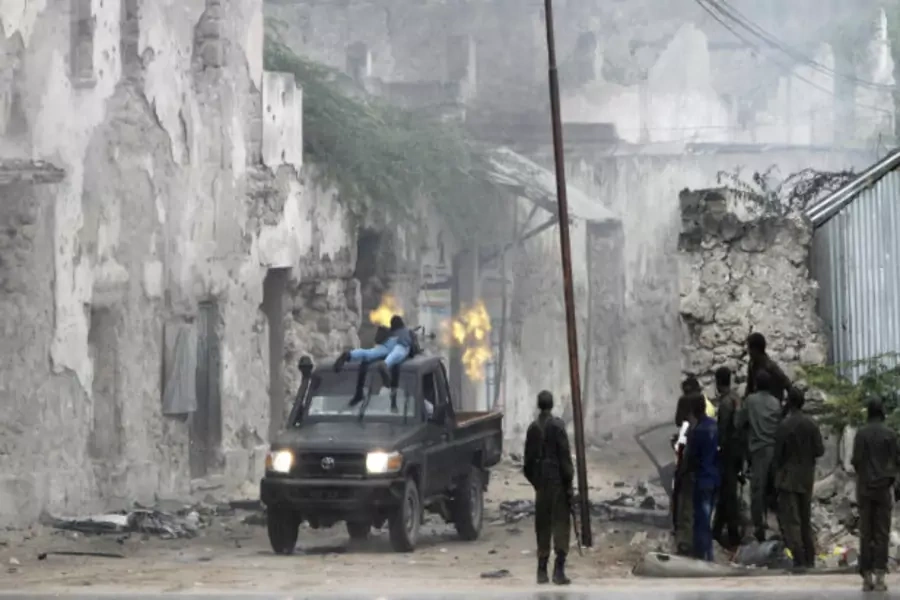More on:
This is a guest post by Alex Dick-Godfrey, Assistant Director, Studies administration for the Council on Foreign Relations Studies Program.
Last week, the United States conducted an airstrike on an al Shabaab target in the Lower Shabelle region of Somalia. Al Shabaab leader Ahmed Abdi Godane was killed in the attack.
This is certainly good news for Somalia and the rest of East Africa. Godane was the mastermind of the Westgate Mall Attack and numerous other bloody operations.
Some will use Godane’s death to support the narrative of a waning al Shabaab. The argument is that as the African Union Mission in Somalia (AMISOM) continues to deny al Shabaab territorial control, the group will weaken. Mogadishu is more secure than it has been in years. Now is the time for the economy to blossom and for the central government to take full control.
But while al Shabaab’s capabilities have certainly degraded, attacks continue and illustrate the group’s resolve to destabilize the country. The loss of geographic control does not necessarily mean the group has been defeated. In truth, this shift may make al Shabaab more dangerous and less predictable. This group, in its various forms since the 1990s, has absorbed setbacks and leadership losses before. It will likely survive the loss of Godane.
The U.S. airstrike reaffirms the United States’ principle policy concern in Somalia: the dissolution of al Shabaab. The United States is concerned with al Shabaab’s global ambitions. American and British citizens have been recruited by al Shabaab in the past, and recruitment does not seem to be waning. Western jihadis training abroad and returning home is a concern. The United States would also like stability in East Africa. Al Shabaab threatens this stability by continuing to strike targets outside of Somalia such as Kenya, Uganda, Ethiopia, and perhaps even Tanzania.
Somalia’s challenges do not diminish. Few other countries around the world have seen the tempo of drone strikes and Navy SEAL assaults. The country is under constant threat of famine, the federalism process creates violence and disenchantment, and Kenya’s anti-terror policies continue to create new recruits for al Shabaab on both sides of the Somali border. The United States has done relatively little to help counter these realities. Eventually AMISOM will leave. Instability and increased violence will likely follow. In the ensuing vacuum, it is likely that al Shabaab, or a new form of the group, will be waiting to reclaim what it has lost.
Taken together, the United States and its allies should remember that the only way to definitively achieve its goals in Somalia is to remove the economic and societal conditions that allow extremism, and groups like al Shabaab, to survive. Godane’s death is significant and it is important to continue to disrupt al Shabaab activities with direct U.S. action. But for lasting solutions, the United States will have to do more than intervene militarily.
More on:
 Online Store
Online Store
